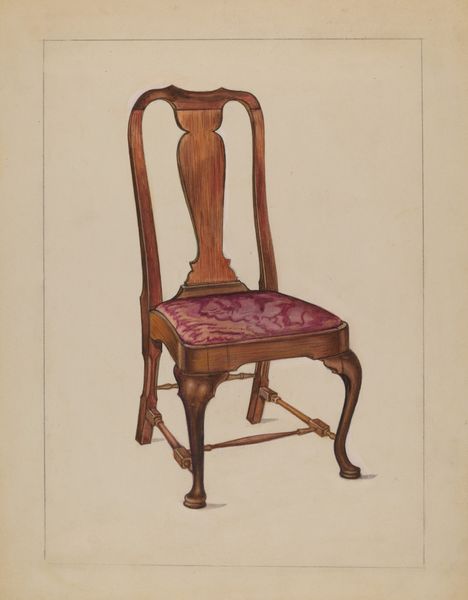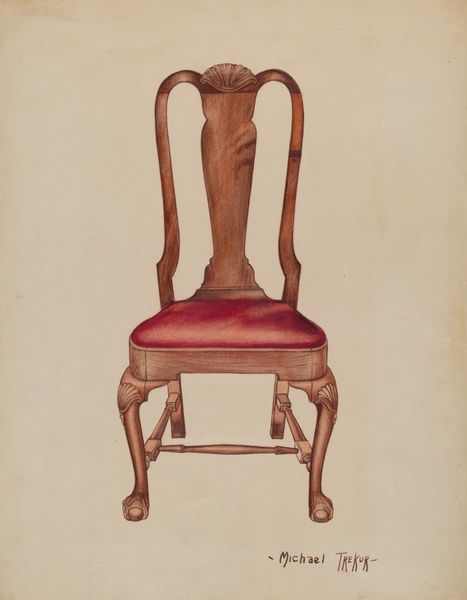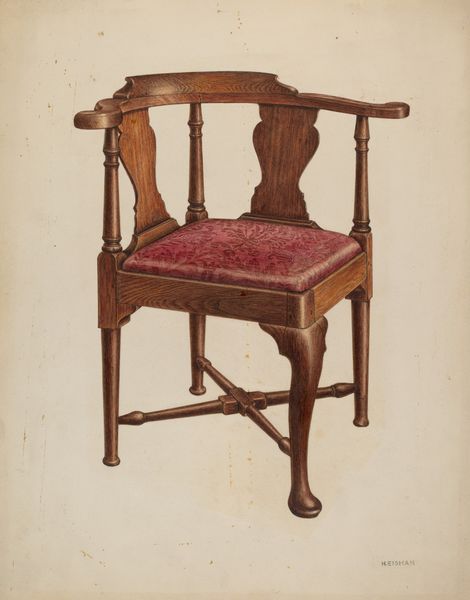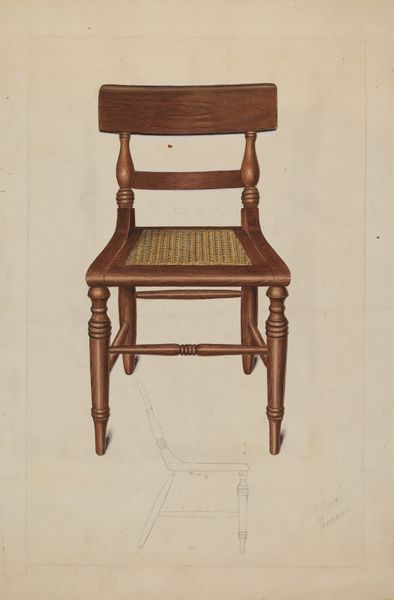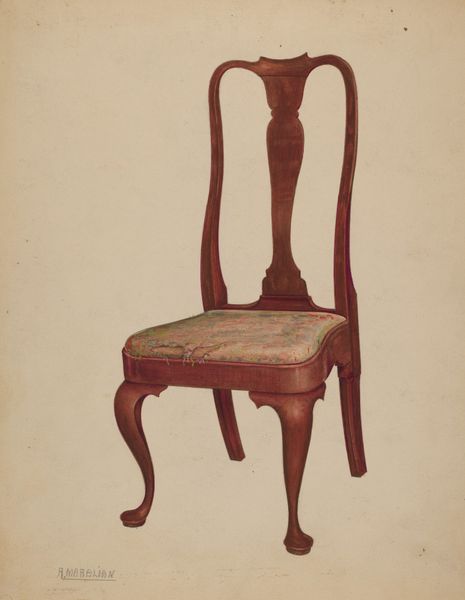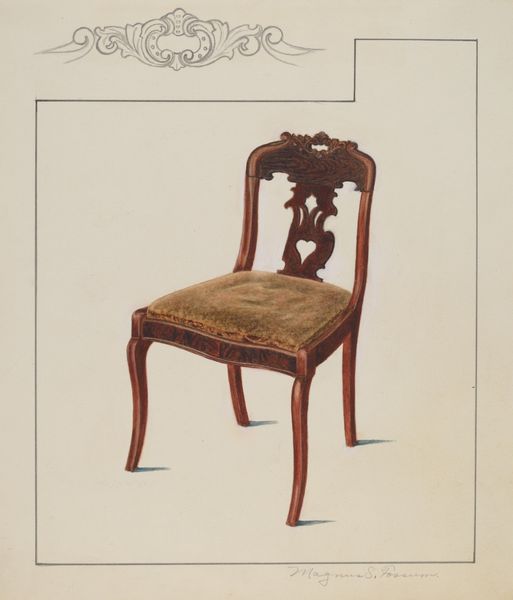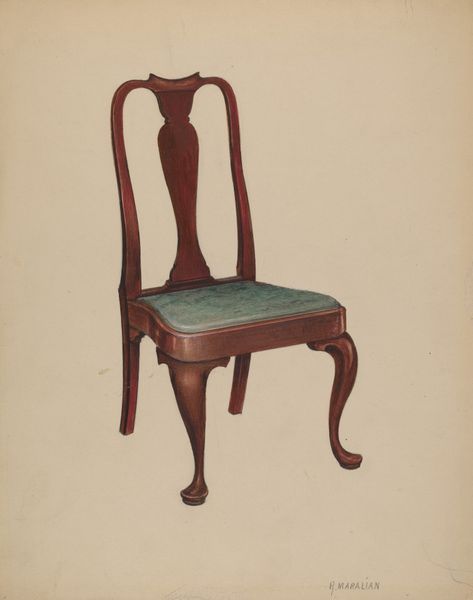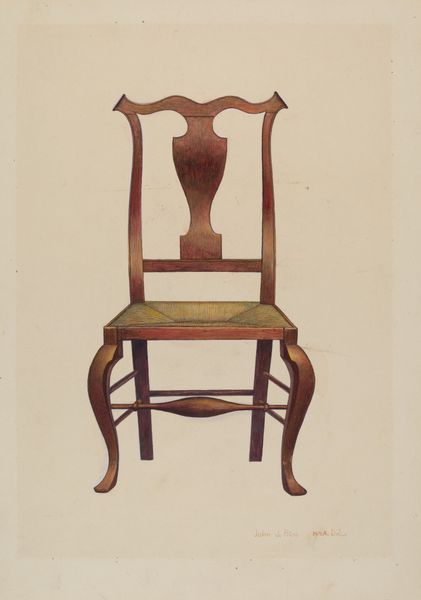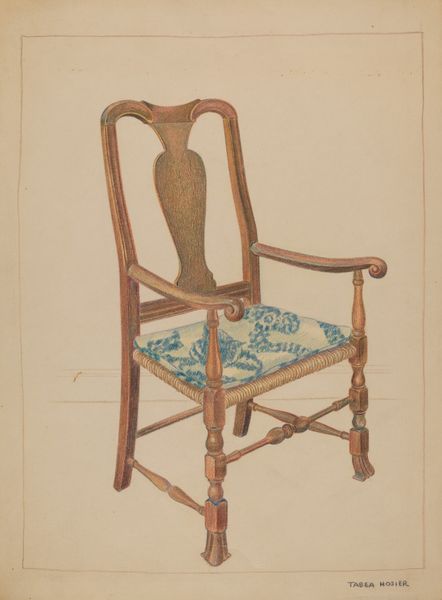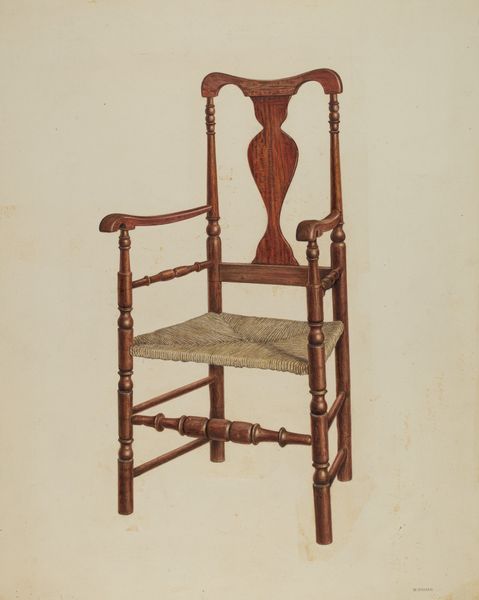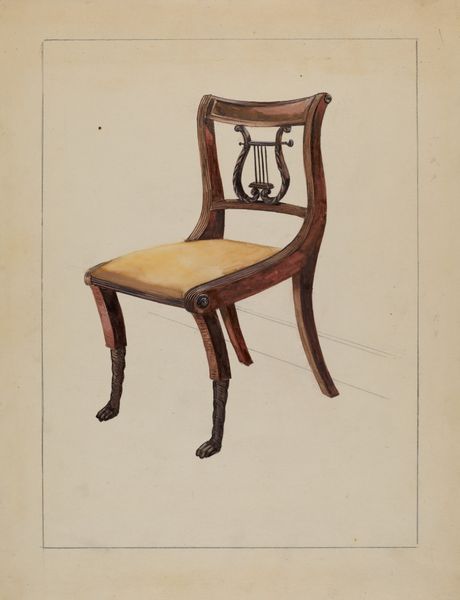
drawing, coloured-pencil, paper
#
drawing
#
coloured-pencil
#
furniture
#
paper
#
coloured pencil
#
watercolor
Dimensions: overall: 28.4 x 22.8 cm (11 3/16 x 9 in.) Original IAD Object: 41"high, 21"wide, 17"deep.
Copyright: National Gallery of Art: CC0 1.0
Editor: This is Michael Trekur's "Walnut Side Chair," created in 1936, using colored pencil on paper. There’s a simple elegance to the rendering of this chair, it looks delicate yet solid at the same time. What strikes you about the composition? Curator: Formally, the most arresting feature is the juxtaposition of the curves of the back and legs against the rigid geometry of the seat. Notice how the artist employs line and shading to create a sense of depth and texture, particularly in the rendering of the wood grain and the fabric of the seat. Editor: The textures do give it a photorealistic feel. What do you make of the limited color palette? Curator: The limited palette focuses our attention on the forms themselves. The browns and muted red work together to create a sense of understated refinement, directing focus onto the structural and material elements. Is there any asymmetry present, perhaps a divergence in line? Editor: If you look closely, the front two legs aren’t mirror images; one shows more of the ball-and-claw foot. Does that intentional imperfection affect the overall design? Curator: It introduces a subtle tension, preventing the work from becoming too predictable. This seemingly minor detail enlivens the entire composition, suggesting an appreciation for the organic within a highly structured form. What overall affect is achieved? Editor: I guess it keeps it from feeling mass-produced or generic, making the piece feel hand-made. I appreciate that! Curator: Precisely. We've analyzed not just the 'what' but the 'how,' enhancing our understanding of artistic intent and the potential of form.
Comments
No comments
Be the first to comment and join the conversation on the ultimate creative platform.
